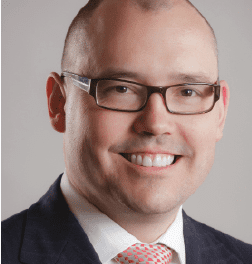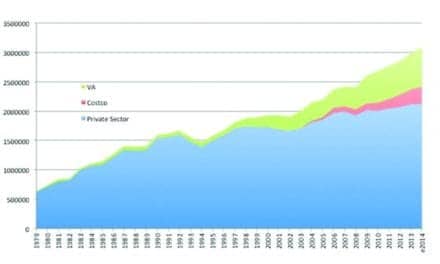Practice Management: Pricing & Productivity | October 2015 Hearing Review
Making sound decisions is critical to the future success of your business.
As the competitive environment continues to change, dispensing professionals need to respond with informed decisions regarding pricing, efficiency, and productivity. How you deal with price, compensation, and products will have a dramatic impact on the future of your business.
You are running a business with increasingly tighter margins. Be prepared. What could happen if you raised or lowered your prices? How should you deal with increased cancel/no-show rates? What are the costs of low fitter productivity, and how can you increase your help rate (close rate)?
This article touches on four main areas in decision making: pricing strategies, productivity, employee compensation, and keys to success in your practice. We hope it helps you make every decision pay off for you and your practice.
Pricing Strategies

You can change the mix of the products you sell. That could have either adverse or beneficial effects on your bottom line, depending on how you price each technology level. Or, you can unbundle your products and services.
In general, there are two different unbundling strategies in the marketplace. One is to develop a list of services and associated prices, and charge the patient for these services as they are utilized, while reducing the price charged for the instruments themselves. In this case, you need to ensure that your professional staff is comfortable selling the benefits of these services to the patient.
There is also the unbundling approach where you develop a fee-for-service model and charge insurance companies. This is working in some cases, but it requires a deep, ongoing knowledge of insurance billing and cpt- and v-codes. It also requires strong relationships with the insurance companies, follow ups, and denial appeals, when necessary.
A third option is to continue to utilize a bundled pricing strategy, but ensure you and your staff effectively communicate all of the services and benefits that come with the hearing aids. If you can present a price and expertly communicate the value of the services included to help the patient hear well again, you will have success.
Parker Center for Audiology in Parker, Colo, has a bundle-and-communicate success story that involves presenting patients with Platinum, Gold, and Silver plans. The Platinum Plan goes with the highest level technology, Gold with mid-high, and Silver with mid-level. The practice does not deviate from this; they simply use the plans to help communicate to the patient the value of the service and technology that accompanies each level. Since implementing the program, they have seen increased close rates, and their professional staff finds it much easier to communicate the value of the programs because they are clearly spelled out at each plan level.
Fighting Brands
Another pricing strategy is to develop a “fighting brand.” In the 1990s, Intel was facing severe pricing pressure on its Pentium chips from lower-cost rivals producing cheaper, less powerful chips. Intel fought back by developing the Celeron processor, garnering market share in the low-cost chip market and preserving both market share and margin in its Pentium brand.
Another example of a successful fighting brand is Qantas airline with its Jetstar line. A similar strategy is used by national retailers producing lower-priced goods to stock their outlet stores, which are not really the same quality, as their “department store” lines. However, customers buy both.
Fighting brands do not always work, however. Recall GM’s poor experience with Saturn.
Creating a fighting brand is worth considering. The pros include helping to maintain price integrity on your other products and helping to satisfy price-sensitive customers.
The big con is that, if not carefully managed, a fighting brand can cannibalize existing brands. You must make sure your professional staff members know how to use the fighting brand appropriately.
Whatever your pricing strategy, it must be contained in a well-thought-out plan. Consider no quick fixes. In developing your plan, know your cost of business. Know your contracts inside and out. Do the math! Set staff expectations, and provide ongoing staff training.
Productivity
One of the key components of increasing your practice’s productivity is to look at your scheduling strategies. Tweaking them slightly—or a lot—can help you deal with increasing cancellation and no-show rates.
A traditional model for practices is to schedule 1-hour hearing aid evaluation (HAE) slots each week (30), mainly in the mornings each day, with an additional 8 in the afternoons, along with service and fitting slots. Minor adjustments to this traditional approach can accommodate higher tested-not-sold (TNS) and no-show rates. You can go from 38 to 44 opportunities each week by basically adding two 30-minute and two 15-minute screening slots each day.
Hours of operation and convenience. The keys to profitability and customer service success lie with managing productivity and increasing capacity. You compete in a retail environment. Customers want convenience on their terms and in their time frames. They are favorably impressed and loyal when you meet or exceed their expectations.
TD Bank (Toronto Dominion) is rocking the banking world and putting a quick end to the old “bankers’ hours,” which used to be roughly 9:00 AM to around 2:00 PM (and on the golf course by 3:00 PM). This bank is open Monday-Wednesday 8:30 AM to 5:00 PM, Thursdays and Fridays until 7:00 PM, Saturday 8:30 AM to 3:00 PM, and Sunday 11:00 AM to 3:00 PM. It calls itself “America’s Most Convenient Bank,” is the nation’s fastest growing bank, and ranks highest in customer satisfaction.
We can learn from this model of increasing capacity and convenience to increase productivity. Does it make sense for us to offer customers some evening or Saturday appointment opportunities? In all likelihood, your competition is doing so, and your potential customers are most active during these periods.
Employee Compensation
In looking at employee compensation, we believe there are a number of “must dos.” These include making revenue producers full-time employees and paying for production, not length of service.
We further recommend bonuses in line with the practice’s growth goals on opportunities afforded each staff member. For example, we advocate rewards for obtaining appointments, getting a third party to accompany a patient, enticing out-of-warranty patients to upgrade their devices, and obtaining patient referrals.
Other successes that can be rewarded include financial contributions to practice growth by practice development reps (PDRs) and increases by your professional staff in help rates, units sold, patient referrals, and sales from follow-up calls to TNS patients.
Driving Success
The success of independent practices will require a business strategy that transforms their role within the marketplace.
One of the most important areas of focus in a successful long-range plan is establishing a formal prospecting and physician referral marketing program. A PDR can be a key addition to your staff to implement this.
Other ingredients to driving success include ensuring that fitting protocols are followed, calling TNSs within 24 hours, focusing heavily on your care after fittings, establishing a wellness program, and daily huddles to drive filling the schedule.
Relying solely on external marketing is no longer effective. You will not be successful without staff-generated opportunities, such as the ones cited above. But what is your staff’s “opportunity mindset”? Your most important job is to motivate them. Your constant focus must be on engaging your staff in change, in recognizing opportunities, and making the most of those opportunities.
Final Thoughts
As you consider ways to maximize results in your practice, set your sights on forming deep, lasting relationships with your community and its leaders, primary care physicians, and patients. Consider reaching out to address business groups and adult facilities, establishing a wellness program, and holding seminars for current and potential patients.
The more ingrained and visible you become in your community, the greater success you will have.
Acknowledgement
This article is based on a presentation made at AHAA’s annual convention earlier this year. More information about AHAA is available at www.ahaanet.com.


Correspondence can be addressed to HR or Tina Soika at [email protected]
Original citation for this article: Soika T, Edgar M. Maximizing Results and Minimizing Risks. Hearing Review. 2015;22(10):18.?





